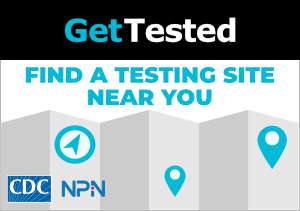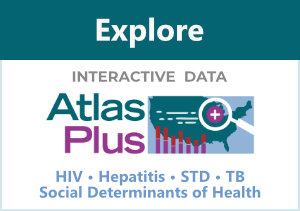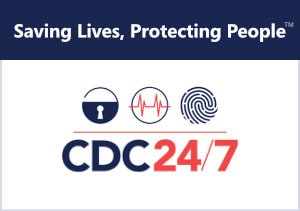Sexually Transmitted Disease Preventive Services Coverage
Chlamydia Testing
| Recommending Authority | Eligible Populations and Service Specifics | Plans That Cover Without Cost-Sharing |
|---|---|---|
| USPSTF (Grade “B”, September 2014) |
Screen the following groups for chlamydia:
(See Chlamydia and Gonorrhea: Screening for additional information.) |
Non-grandfathered private health insurance plans Medicaid expansion plans Traditional Medicaid plans* |
| Bright Futures/AAP Recommendations for Pediatric Preventive Health Care (March 2020) |
Screen all adolescents between the ages 11 and 21 according to recommendations in the current edition of the AAP Red Book: Report of the Committee on Infectious Diseases. These include at least annual screening for:
(See Recommendations for Preventive Pediatric Health Care for additional information.) |
Non-grandfathered private health insurance plans Medicaid expansion plans Traditional Medicaid plans |
* Optional for adults, depending on state policy; however, preventive services for children are often covered as part of the Early and Periodic Screening, Diagnostic, and Treatment (EPSDT) benefit for children
Syphilis Testing
| Recommending Authority | Eligible Populations and Service Specifics | Plans That Cover Without Cost-Sharing |
|---|---|---|
| USPSTF (Grade “A”; June 2016) |
Screen nonpregnant adults and adolescents at increased risk for syphilis infection.3
(See Syphilis Infection in Nonpregnant Adults and Adolescents: Screening for additional information) |
Non-grandfathered private health insurance plans Medicaid expansion plans Traditional Medicaid plans* |
| USPSTF (Grade “A”, September 2018) |
Screen all pregnant women for syphilis infection.4
(See Syphilis Infection in Pregnant Women: Screening for additional information) |
Non-grandfathered private health insurance plans Medicaid expansion plans Traditional Medicaid plans* |
| Bright Futures/AAP Recommendations for Pediatric Preventive Health Care (March 2020) |
Screen sexually active adolescents between the ages 11 and 21 who are at increased risk for infection, in accordance with recommendations in the current edition of the AAP Red Book: Report of the Committee on Infectious Diseases 2
(See Recommendations for Preventive Pediatric Health Care for additional information.) |
Non-grandfathered private health insurance plans Medicaid expansion plans Traditional Medicaid plans |
* Optional for adults, depending on state policy; however, preventive services for children are often covered as part of the Early and Periodic Screening, Diagnostic, and Treatment (EPSDT) benefit for children
Gonorrhea Testing
| Recommending Authority | Eligible Populations and Service Specifics | Plans That Cover Without Cost-Sharing |
|---|---|---|
| USPSTF (Grade “B”; September 2014) |
Screen the following groups for gonorrhea:
(See Chlamydia and Gonorrhea: Screening for additional information.) |
Non-grandfathered private health insurance plans Medicaid expansion plans Traditional Medicaid plans* |
| Bright Futures/AAP Recommendations for Pediatric Preventive Health Care (March 2020) |
Screen all adolescents between the ages 11 and 21 according to recommendations in the current edition of the AAP Red Book: Report of the Committee on Infectious Diseases. These include at least annual screening for:
(See Recommendations for Preventive Pediatric Health Care for additional information.) |
Non-grandfathered private health insurance plans Medicaid expansion plans Traditional Medicaid plans |
* Optional for adults, depending on state policy; however, preventive services for children are often covered as part of the Early and Periodic Screening, Diagnostic, and Treatment (EPSDT) benefit for children
Ocular Prophylaxis for Gonococcal Ophthalmia Neonatorum
| Recommending Authority | Eligible Populations and Service Specifics | Plans That Cover Without Cost-Sharing |
|---|---|---|
| USPSTF (Grade “A”; January 2019) |
Provide prophylactic ocular topical medication to all newborns for the prevention of gonococcal ophthalmia neonatorum.5 (See Ocular Prophylaxis for Gonococcal Ophthalmia Neonatorum: Preventive Medication for additional information.) |
Non-grandfathered private health insurance plans Medicaid expansion plans Traditional Medicaid plans* |
* Optional for adults, depending on state policy; however, preventive services for children are often covered as part of the Early and Periodic Screening, Diagnostic, and Treatment (EPSDT) benefit for children
Human Papillomavirus: Testing
| Recommending Authority | Eligible Populations and Service Specifics | Plans That Cover Without Cost-Sharing |
|---|---|---|
| Women’s Preventive Services Guidelines (December 2016) |
Screen average-risk women aged 21 to 65 years for cervical cancer.
(See Women’s Preventive Services Guidelines for additional information.) |
Non-grandfathered private health insurance plans Medicaid expansion plans |
| USPSTF (Grade “A”; August 2018) |
Screen women ages 21 to 65 for cervical cancer.
Age 21–29:
Age 30–65:
(See Cervical Cancer: Screening for additional information) |
Non-grandfathered private health insurance plans Medicaid expansion plans Traditional Medicaid plans* |
* Optional for adults, depending on state policy; however, preventive services for children are often covered as part of the Early and Periodic Screening, Diagnostic, and Treatment (EPSDT) benefit for children
Human Papillomavirus: Vaccination
| Recommending Authority | Eligible Populations and Service Specifics | Plans That Cover Without Cost-Sharing |
|---|---|---|
| ACIP (August 2019) |
Vaccination against human papillomavirus (HPV) is routinely recommended at age 11 or 12 years.
(See Human Papillomavirus Vaccination for Adults: Updated Recommendations of the Advisory Committee on Immunization Practices for additional details) |
Non-grandfathered private health insurance plans Medicaid expansion plans Traditional Medicaid plans* |
* Optional for adults, depending on state policy; however, preventive services for children are often covered as part of the Early and Periodic Screening, Diagnostic, and Treatment (EPSDT) benefit for children
Sexually Transmitted Infection and HIV Prevention Counseling
| Recommending Authority | Eligible Populations and Service Specifics | Plans That Cover Without Cost-Sharing |
|---|---|---|
| USPSTF (Grade “B”; September 2014) |
Provide intensive behavioral counseling to prevent sexually transmitted infections (STIs) to all sexually active adolescents and for adults at increased risk for STIs. 9 (See Sexually Transmitted Infections: Behavioral Counseling for a discussion of risk factors.) |
Non-grandfathered private health insurance plans Medicaid expansion plans Traditional Medicaid plans* |
| Women’s Preventive Services Guidelines (December 2016) |
Provide counseling on sexually transmitted infections, including HIV, for all sexually active women.6 (See Women’s Preventive Services Guidelines for additional information.) |
Non-grandfathered private health insurance plans Medicaid expansion plans |
* Optional for adults, depending on state policy; however, preventive services for children are often covered as part of the Early and Periodic Screening, Diagnostic, and Treatment (EPSDT) benefit for children
Section 2713 of the Public Health Service (PHS) Act, as added by the Affordable Care Act and incorporated into ERISA (The Employee Retirement Income Security Act of 1974) and the Code, requires that non-grandfathered group health plans and health insurance issuers offering non-grandfathered group or individual health insurance coverage provide coverage of certain specified preventive services without cost sharing.10 These preventive services include:
- Evidence-based items or services that have an “A” or “B” recommendation rating from the United States Preventive Services Task Force (USPSTF).
- Immunizations recommended for routine use in children, adolescents, and adults by the Advisory Committee on Immunization Practices (ACIP).
- Evidence-informed recommendations to improve the health and wellbeing of infants, children, and adolescents that are included in the Health Resources and Services Administration’s (HRSA’s) Bright Futures Project.
- Recommended services included in the HRSA-supported Women’s Preventive Services Guidelines, including all Food and Drug Administration (FDA)-approved contraceptives, sterilization procedures, and patient education and counseling for women with reproductive capacity, as prescribed by a health care provider.
In addition to these services, private and public plans may cover other preventive services without cost-sharing.
- Chlamydia and Gonorrhea: Screening; U.S. Preventive Services Task Force. September 2014
- Bright Futures/AAP Recommendations for Pediatric Preventive Health Care; American Academy of Pediatrics. March 2020
- Syphilis Infection in Nonpregnant Adults and Adolescents: Screening; U.S. Preventive Services Task Force. June 2016
- Syphilis Infection in Pregnant Women: Screening; U.S. Preventive Services Task Force. September 2018
- Ocular Prophylaxis for Gonococcal Ophthalmia Neonatorum: Preventive Medication; U.S. Preventive Services Task Force. January 2019
- Women’s Preventive Services Guidelines; Health Resources and Services Administration. December 2016.
- Cervical Cancer: Screening; U.S. Preventive Services Task Force. August 2018
- Human Papillomavirus Vaccination for Adults: Updated Recommendations of the Advisory Committee on Immunization Practices Centers for Disease Control and Prevention. MMWR 2019; 68(32);698–702
- Sexually Transmitted Infections: Behavioral Counseling; U.S. Preventive Services Task Force. September 2014
- Coverage of Certain Preventive Services Under the Affordable Care Act; U.S. Department of Health & Human Services. July 2015
- U.S.C. § 1395l (see U.S.C. § 1395x(ddd) for definitions of preventive services)
- Annual Update of the HHS Poverty Guidelines. 84 FR 1167; 1167-1168. February 2019.
- Medicaid and Children’s Health Insurance Programs: Essential Health Benefits in Alternative Benefit Plans, Eligibility Notices, Fair Hearing and Appeal Processes, and Premiums and Cost Sharing; Exchanges: Eligibility and Enrollment; Final Rule. 78 FR 42159; 42224-42226. July 2013
- State Medicaid Director letter #13-002, regarding “Affordable Care Act Section 4106”. 2013. Centers for Medicare & Medicaid Services (CMS).


